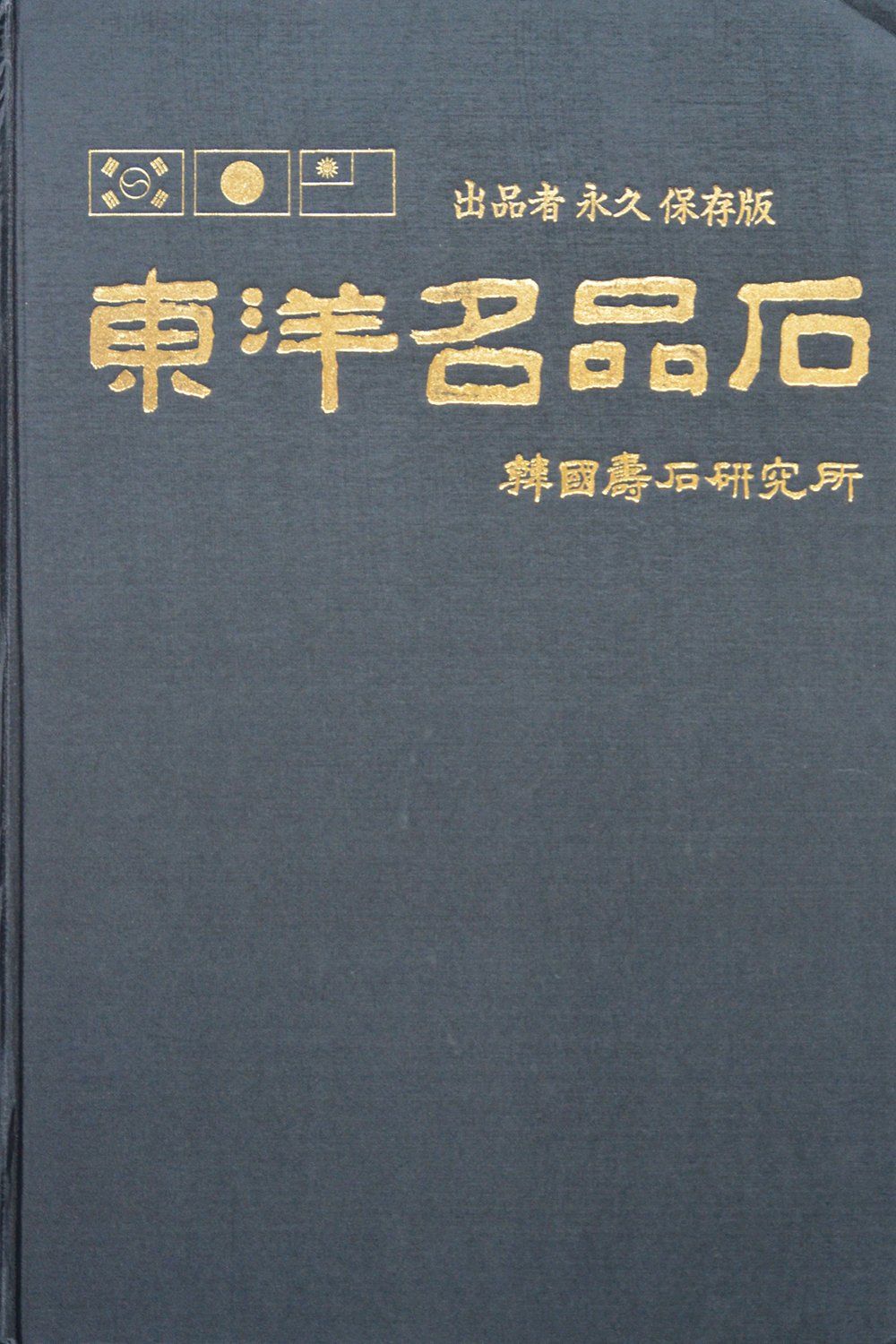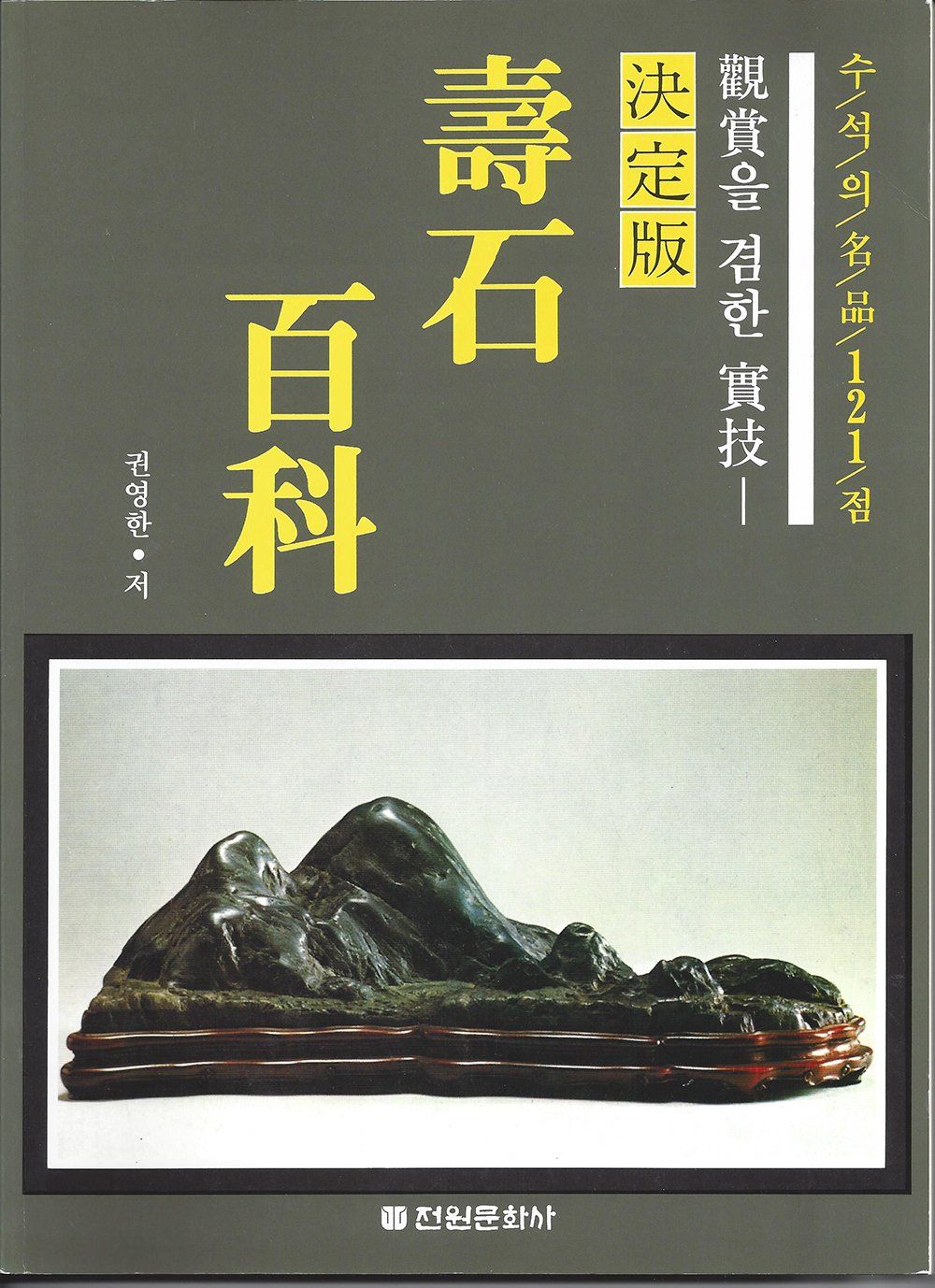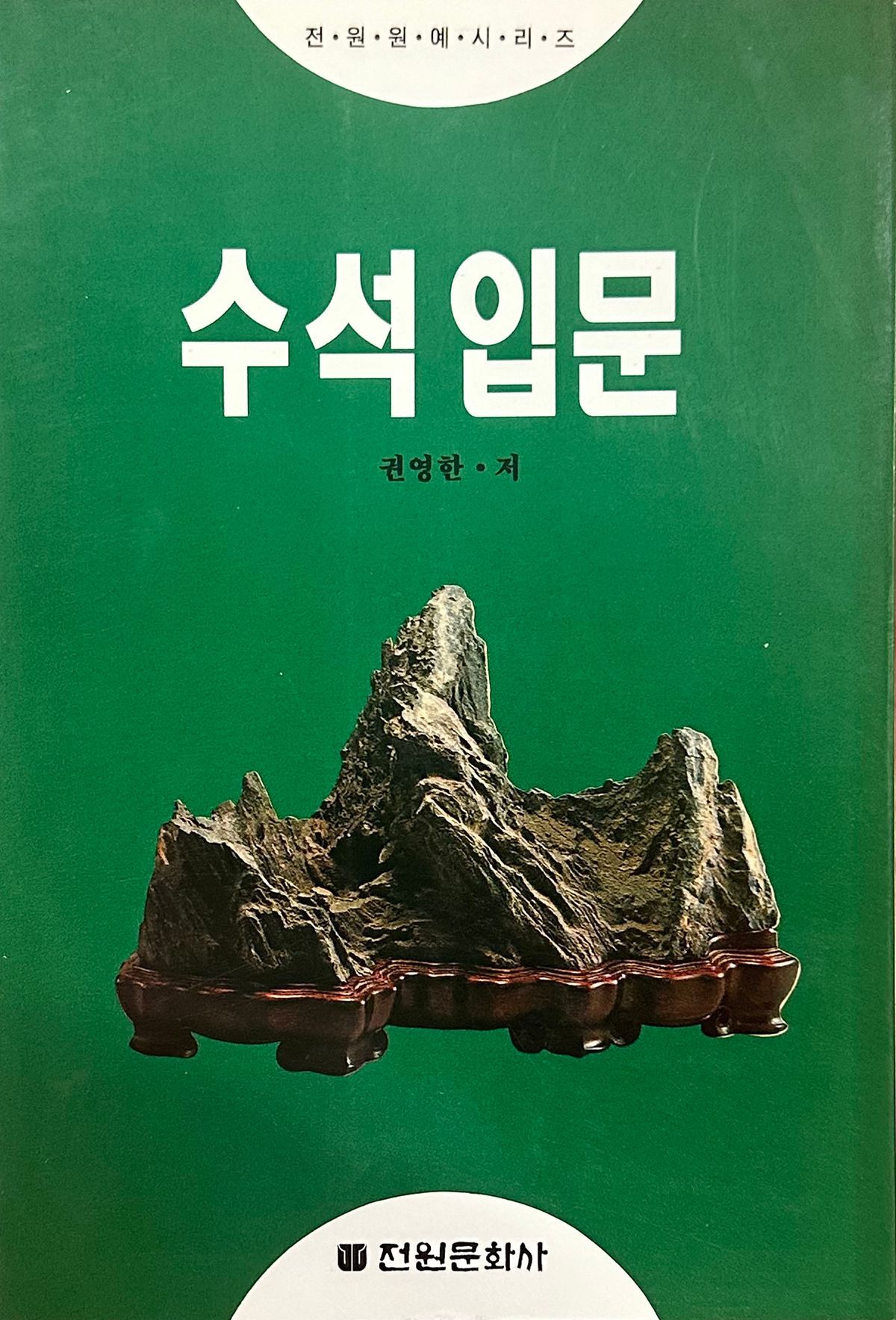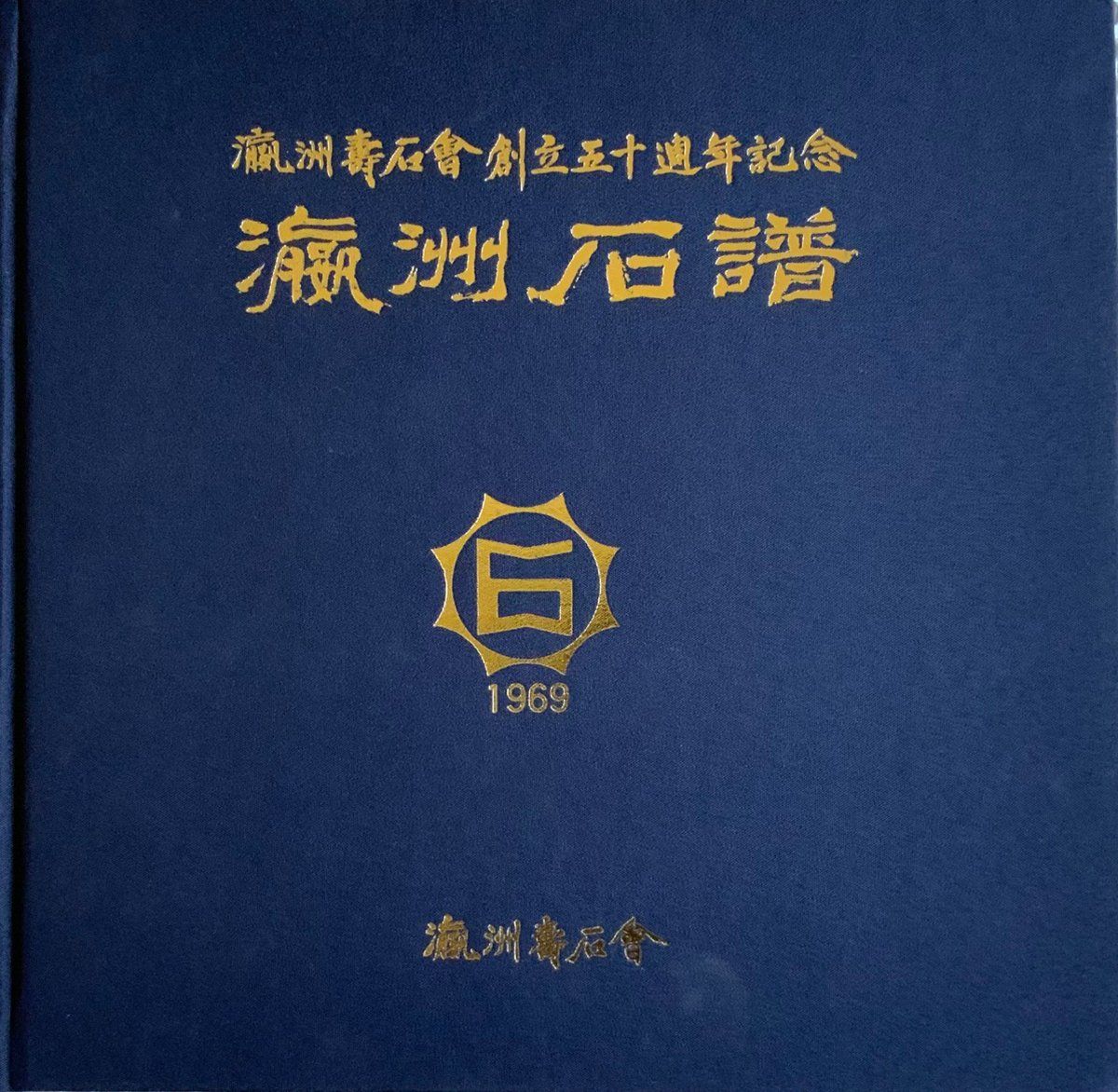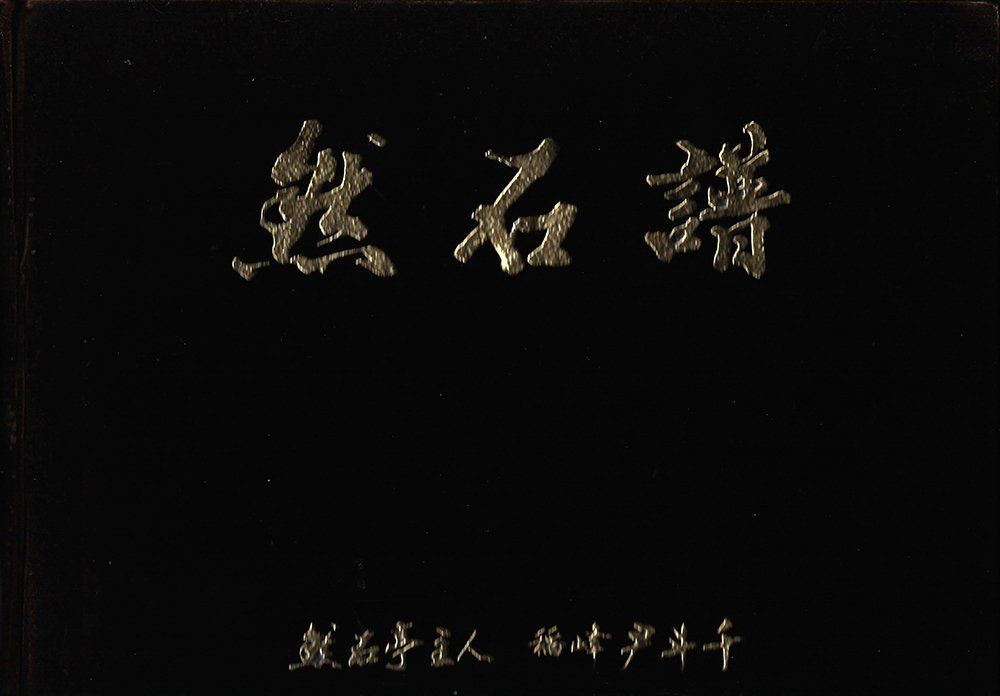KOREAN BOOK REVIEWS
Editorial Department, 2012
Suseok, Aesthetics through Meeting Stones.
Rating: Not Recommended, it appears to be out of touch, at least in part, with current Suseok practices.
Koyo Achim, Seoul, Korea. 175 pages. ISBN 978-89-6039-986-0.
This volume is one of a series of introductory guidebooks published by the Tae-eul Publishing Company in Korea. It is intended for people new to stone appreciation. There is a resemblance to some of the earlier introductory guidebooks published in Japan during the peak of Suiseki popularity in the 1970s and 1980s. Numerous black and white photographs are interspersed among the brief text. Many of these photos are poor quality. Eight chapters focus on different aspects of Suseok appreciation including how to appreciate, display, and name stones. The fifth chapter is devoted to cutting, grinding, and polishing stones much like the Japanese tradition decades earlier.
This book does not reflect the current requirement that a stone must be a natural unaltered stone to qualify as a Suseok.
Huh, Kisoo, 2019
Je1hoe Hangukchusangseok Gongmodaejeon Jakpumjip: Gakgwa Bulgaqui Gyeonggye
(The 1st
Korean Abstract Stone Competition Collection of Works: The Boundary between Carving and Non-carving.)
Rating: Excellent; an important catalog that succeeds in exploring the boundaries between worked and unworked stones.
Korea Abstract Stone Forum, Seoul. 260 pages. No ISBN.
This is truly an impressive catalog of an exhibition of viewing stones that occurred June 6-9, 2019 in Korea. This display of over 100 stones explored the boundary between carved and non-carved viewing stones. Concurrently, it explored the boundary between traditional and contemporary stone display methods. As a result, this is one of the more exciting books published on Asian stones in many years.
There are several stone sculptures illustrated along with other more natural appearing stones that suggest the careful touch of a stone carver’s hand. One stone appears to have been sliced vertically to expose the color and patterns of the stone’s interior. A few works of modern art utilizing stones were included in this exhibition.
The range of stone types in this exhibition reveals the diversity of stones being collected and displayed in Korea today. This is not an illustrated book of traditional landscape stones. Instead, many rounded to ovoid-shaped beach stones, interesting abstract-shaped stones, and others show the distinction between preferences in forms and styles of Korean and Japanese viewing stones.
Some natural unaltered stones are displayed in traditional Korean base; however, many are displayed in contemporary style bases from a long history of tradition. The innovation in bases to hold, orient, and display stones are remarkable. The organizers and participants in this exhibit must have shaken the long-standing belief that all Korean suseok are natural, unaltered stones and must be displayed in traditional methods.
Jang Jun-geun. 1982
Authentic Suseok Appreciation
Rating: Excellent, a valuable reference to the state of Korean Suseok in the early 1980s.
Seogo Publishing Company, Seoul. 416 pages, No ISBN. 5,000 Won when published. (이면근 , 1982. 수석탐구의 실제. 광복 출판문화사).
This introductory book to the art and practice of Suseok is exceptional for its thoroughness in treating every aspect of Korean stone appreciation. The first one-quarter is devoted to the history, and defining what Suseok before describing in detail landscape, shape, pattern and colored, and abstract stones. This is followed with a series of essays relating to the aesthetic qualities to Korean stones. The author even included a short description of the differences between Japanese suiseki and Korea Suseok.
Jang then shifts to topics relating to the collection and processing of stones. Articles about removing dirt, chemical treatments, and oiling stones reveals accepted practices at this time. These topics are followed by a series of articles dealing with the display of stones in trays and carved wood bases. It is interesting to note three sections on alterations, bottom cutting, and polishing stones. Apparently, it was acceptable to make limited alterations to stones at this time. This may be an influence of several similar introductory Suiseki books published in Japan.
The next series of chapters help readers learn about cultivating stones with moss, water, and by touching. This leads to a series of essays about how to appreciate Suseok and the rewards of a life with these rocks. The latter part of this book is a guide to different major collecting sites in each province and a brief elementary treatment of igneous, sedimentary, and metamorphic rocks.
Jang Jun-geun. 1985
The Stone Appreciation of Past Scholars (옛 선비들의 愛石風流, Yet Seonbideurui Aeseokpungnyu)
Rating: Excellent, an important reference for serious students and scholars of stone appreciation.
Seogo Publishing Company, Seoul. 392 pages, no ISBN. (500 copies printed).
This valuable reference stands out from the hundreds of published stone exhibition catalogs, and the introductory manuals to Korean stone appreciation due to its focus on the history and development of Korean Suseok from the earliest days. This volume clearly documents the influence of Chinese thought and stone appreciation practices on Korean interpretations of selected unusual rocks. Unfortunately, only 500 copies of this book were printed.
This book is divided into three major parts. Part One is the Introduction, The Background of Fine Stones. Fourteen essays are present including Seokgasan: The Beginnings of Suseok; The Ethos of Korean Stone Appreciation; The Background of the Philospohy of Suseok, and others.
Part Two, Beloved Classic Korean Stones contains essays about the 80 stones of Monk Seungjeon, The Broken Fish stone of Silla, Dan Gye’s record of Tribute to Stones, and others.
Part Three, the largest of the three parts, is Classics on Stone Appreciation. This part contains 36 essays on specific topics including the Ethos of Mifu’s Fine Stones, Su Dongpo’s Taste for Stone Appreciation, Taihu and Lingbi Stones, the Twelve Stones of Suihan Hall, the Stone Catalog of Yamei, and others. The original Chinese Text is included for each essay.
The Stone Appreciation of Past Scholars is generously illustrated with black and white photographs. Sadly, this volume has been overlooked by scholars and students who focused on either Chinese or Japanese practices. This volume will document the important role of Korean Suseok played in the development of the ancient Asian art of stone appreciation.
Jeon Jaeil & Lee Jaeyu, 2015
Je4hoe Daehanmingung Haeseong Myeongpumchodaejeon.
(The 4th Korea Sea Stone Masterpiece Exhibition).
Rating: Very good, an important reference to Korean beach stones
Publishing Company Geobukgol. Busan, Korea. 203 pages, ISBN 978-89-91823-70-9. Price:50,000 won when published.
The popularity of beach or sea stones is evident since this is the fourth masterpiece exhibition of these stones. There is a considerable following of beach stones among Korean collectors. This exhibition and subsequent catalog contain over 170 stones. Each stone and its base are given a full page in this volume. As a result, readers can study the details found in each rock. Since they were collected along beaches, most of these have been worn to rounded, ovoid, or related shapes. The surfaces are smooth and with various patterns. Some of the stones are black, while others have complex patterns of colors reminiscent of the works of leading expressionist painters. The carved wood bases, daezwa in Korean, used with these beach stones are simple, unadorned shallow cup-shaped forms that are stained dark in color.
This hardbound volume is a quality production with excellent photographs, a good layout, and design.
Jeong Han-na, 2020
Pyeongchang Stone Cultural Art Center
Rating: Excellent, one of the best volumes to consult for seeing the range of unusual and beautiful stones found in peninsular Korean, its islands, and the coastal sea.
Pyeongchang Cultural Center. 290 pages. No ISBN.
This handsome volume is a photo album of the Suseok in the collection of the Pyeongchan Stone Museum located in scenic eastern Gangwon Province in Korea. It is the largest and finest of the different stones museums in this country. This volume beautifully illustrates natural stones from all regions of South Korea in the museum’s collection when it opened to the public in 2020.
The book presents the stones, one per page, in the permanent exhibition hall followed by a smaller section featuring the special exhibits' hall, and ends with a section of other donated stones. Page after page of high quality photographs makes this book a visual delight illustrating one outstanding Suseok display after another. Studying the viewing stones in this book encourages you to reflect on the natural beauty and diversity of unaltered stones created by the forces of nature. In addition, exquisite examples of Korean craftsmanship can be seen in the different ceramic and bronze trays, and carved wood bases holding and orienting the rocks.
Jo Haeng-jin.2003
2003 International Suiseki Exhibition in Gyeongju World Culture Expo
Rating: Excellent, a major reference that serious students and scholars of Asian stone appreciation practices should consult.
Aeseokin Association, Seoul. 608 pages, no ISBN.
One of the most comprehensive displays of Suseok occurred as part of an international exposition. South Korea organized a major world cultural exposition that was held at the Gyeongju World Culture Expo Park in 2003. This event was held at the Bomun Tourist complex in the ancient capital of Gyeongju. A prime goal of this expo was to showcase the art and culture of the Silla dynasty. There were exhibitions, performances, and various activities including a display of more than 575 Korean rocks.
Fortunately, a large format catalog of this Suseok exhibition was published. This 608-page book contains full-page illustrations, one stone per page, of Suseok from each of the nine provinces of South Korea. Because of this, stone connoisseurs can obtain a good understanding of the different types found in each of the provinces.
The Suseok are beautifully displayed in ceramic or metal trays with sand, or in Korean-style carved wood bases. Each page in this large format, hardcover book is 33.5 x 25.5 cm (13.2 x 10 inches). The photography is excellent. Due to the page size and quality of photographs, collectors can study the detailed features of each stone and how they are displayed.
This is an important and impressive volume that documents modern Korean Suseok. The emphasis on using only natural stones rather than modified stones in this 608-page book is a credit to Koreans.
Kim, Chung Soo; Oh, Jin Ahn, & Lee, Duk Soo 2017.
My Soul!, One Life, One Stone—Invitation Exhibition.
Ilsengilseok Invitation Exhibition. Choi Guibak publisher. 306 pages, ISBN: 978-89-969963-9-2. 36 x 25 cm, boxed. Price when published 200,000 Won. In Korean.
Periodically, an exceptional stone appreciation exhibition catalog is published. This is one of those occasions. It is a sumptuous volume of an extraordinary exhibition of Korean Suseok. Since the exhibition was by invitation only, the organizers set a high-quality requirement for the stones display.
The exhibition and subsequent book are divided into two main categories—river or mountain stones and sea (beach and island) stones. Approximately 64% of the stones were collected in rivers and mountains, while the remaining 36% were gathered from islands and beaches. Only one stone is illustrated on a page giving the viewer an opportunity to explore the details found in the stone, its base, or its display tray. This catalog provides an excellent opportunity to learn about the diversity of Suseok collected and appreciated today in South Korea.
Rating: Excellent, a valuable reference to modern Korean Suseok.
Kim, Jeong-su & Oh, Jin-an. 2019
One Life, One Stone—Exhibition II
Jeong Seong-yong Publisher. 302 pages. ISBN: 979-11-964596-2-8. Price when published 200,000 Won. Boxed. In Korean.
The title of this volume comes from the traditional Korean wisdom that if you find just one “Treasure Stone” (Myong Seok) in your life, you are so blessed. A viewing stone must be of exceptionally high quality to meet this high standard. The exhibition's organizers and the book's editors achieved their goal. It is a world-class exhibit of superior Korea Suseok.
Carefully observing the stones illustrated in this volume will open the door to a better understanding of Morean Suseok. The type of stones collected, their style of bases and trays used, and the manner in which stones have been displayed all help to define the long tradition in Korea. The Korean style of Suseok is impressive, and each specimen makes a strong statement. In Korea, there is a strong preference for the use of natural stones that have not been altered or enhanced, as seen in many Chinese and Japanese viewing stones.
This impressive book divides the exhibited stones into two categories. The first and largest section presents stone, the Namhan River, along a small representation of the Younggang River. A selection of beautiful Korean sea stones comprises the second section. These stones were collected along beaches and from several of the many islands along the coast of South Korea.
This large, 30 x 25 cm hardcover book is a quality publication with excellent photographs, wonderful layout and design, and first-class printing and binding.
Rating: Excellent, a splendid volume and valuable resource for stone connoisseurs wishing to learn more about Korean Suseok.
Kim, Jungyu, Jeong, Dong-eok, and Lee Kyeondeok. 2008.
Joint Exhibition Catalog of Korean Suseok
Preparatory Committee of the Joint Exhibition of Korean Suseok. 2 volumes in slipcover, 1056 pages. No ISBN. 31 x 26 cm
This is an extraordinary catalog of what may be the largest exhibition of viewing stones ever published. There are over 1000 stones illustrated, one per page, in this oversized 31 x 26 cm volume. In non-Asian countries, we are accustomed to seeing from 70 to 150 stones exhibited and consider a display of 200 to 300 stones as a major event. Thus, it is hard to comprehend a venue when so many stones from a single country are displayed. An examination of the stone displays featured in this book reveals only high-quality and beautifully displayed Suseok in suiban, dobans, or carefully carved wood bases. Stones collected in mountains, rivers, and beaches are included. There are no mediocre or poor-quality Suseok in this catalog.
This catalog is indicative of the breadth and vitality of the Suseok community in South Korea at the time this book was published. The number of public stone museums established and Suseok-related books published in the last three decades is a strong testimony to the importance of stone appreciation practices in this country. The long and important history of Suseok has been largely overlooked in Western countries. This volume and many other recently published books can help change that perception.
Rating: Excellent, a great introduction to the scope of stone types included in Korean Suseok.
Kim, Min-jeong, 2017
Someone Is Sitting
Rating: This is a good starting point for those wishing to learn about Asian aesthetics. From here, you can pursue more in-depth studies in each of these areas.
Koyo Achim, Seoul, Korea. 175 pages. ISBN 978-89-6039-986-0.
Translated by Jyong-Sook Woo. In Korean and English.
By David McCann
The sijo is a three-line Korean verse form that has been composed and performed for centuries. A famous early example is this one, by the revered stateman and poet Jeong Cheol, 1536-1594. The poem was written early in the Joseon Dynasty (1392-1897) at a time when the new government was pressing hard against Buddhist practices, which had been important in the preceding dynasty.
A shadow falls into the water;
a monk crosses over the bridge.
“Hey you monk! Stop right there.
Let me just ask where you’re going.”
With his staff, he points at the white clouds,
and does not turn to look back.
Considering the form, the sijo is three lines, and each line has four parts of 3 to 4 or 5 syllables. The first line is said to start the poem, and the second develops or continues the narrative or the description. The third line starts with a turn or twist in its first part, a change in the direction of the poem, never varying from three syllables. The second unit expands to five syllables, and then the poem concludes. Because the lines of the poem are long, with their four units, it is very common in translations and in contemporary Korean publishing to divide them on the page.
A striking feature of the sijo over the centuries has been its performance dimensions. The sijo is sung in a distinctively drawn-out melody. In the old days, folks on an outing in the countryside might sing with friends. But the “plot” development also has performance dimensions. In Jeong Cheol’s sijo, the first line invites the mental eye to look down at the water, then up at the bridge. The second line gives us the forceful, intimidating call out, like a recording, from the Confucian official to the Buddhist monk. The third line provides the visual image, of the monk pointing with his staff as he continues on his way.
It is striking to note the performance, and to think what might have happened if the monk had in fact turned and looked back. A dangerous moment. But also, it is remarkable how Jeong Cheol shared this body-cam video of the encounter, revealing himself to generations of readers.
The sijo poet Min-Jung Kim has been a leader in the contemporary sijo realm. Her books give us the form and its lively presence in the Korean literary realm. She has been active in the leadership of the Korean Sijo Poets Association, the Korean Writers Association, and Korea PEN. She and Hyung-Suk Woo, translator of her poems, have dedicated their efforts to increase international awareness and appreciation for the sijo in its various manifestations.
An example of one of Kim’s romantic sijo poems is:
Under A Maple Tree
Why is it that the tree is
tinged with red, even from spring?
The light green dream that we’ve dreamed
Has never been in full bloom yet.
Holding hands, we feel the hands hot.
The maple tree looks aflame too.
The book
Someone is Sitting brings an amazing gathering of photographs of Scholar Stones, in the poet’s own collection, together with the poet’s sijo representations. It is our pleasure to listen, to look, and to learn from and about their interaction.
Kim, Min-jung. 2020
Going Together
Rating: Very Good, an important work linking poetry and viewing stones
Koyo Achim. Seoul, Korea. 247 pages. ISBN 979-11-0-90487-27-6.
Translated by Jyong-Sook Woo. In Korean and English.
These two volumes may represent the most extensive set of poems produced in modern times related solely to viewing stones. We are keenly aware of the early Chinese poems written about unusual stones by such prominent Tang dynasty scholars and stone connoisseurs Bai Juyi, Niu Sengru and Li Pak. The author of these two volumes, Dr. Kim Min-jung is a nationally recognized poet and scholar in Korea. She specializes in the traditional poetic form known as Sijo, a style that developed during the Goryeo period and flourish during the following Joseon dynasty. The poems focus on romantic, metaphysical, or spiritual themes and are different from to the Japanese haiku and tanka.
The 2020 volume contains 111 poems divided into five categories. Like the first volume, these poems are all based upon stones in Kim’s personal collection. Most of these stones are natural unaltered sea stones found along coastal beaches.
Korean Suseok Association. 2023
2023 Suseok Catalog. 41st Korean Suseok Association Nation Suseok Exhibition
Rating: Excellent, a valuable reference to understanding present day Korean Suseok
Dol AE Geurim Publishers. 346 pages. No ISBN.
This impressive volume documents the display of exceptional viewing stones from throughout the country at the 2023 National Suseok Exhibition held in Gyeongju, South Korea. Each year, the Association host a national exhibition where members of regional Suseok associations can assemble and showcase natural stones. This 41st national exhibition consists of wide range of stone types, mainly displayed in shallow ceramic or bronze trays with sand or in hand-carved wood bases.
The elaborate opening ceremonies with its congratulatory letters, poems, lecture, and musical performace, is included in the first twenty-pages of this book. The remaining pages are devoted to high quality photographs of individual stone displays, one per page. This layout coupled with the large format, 23 x 29.5 cm, gives readers an opportunity to closely examine the detailed features of each stone. Exploring the diversity of rock types and methods of display illustrate the strength, vitality, and extent of Suseok appreciation in Korea.
A careful study of the types of stones and methods of display in this books shows that Korean Suseok is distinct from Chinese Scholar Stones and Japanese Suiseki. This distinction is sometimes subtle, and, in some cases, the influences of Chinese and Japanese practices can be seen.
Korean Suseok is vastly underappreciated by viewing stone enthusiasts in non Asian countries. To truly understand the meaning of Asian stone appreciation and the aesthetic concepts embraced by the study and admiration of beautiful and thought provoking lithic pieces, one must be as familiar with Korean practices as they are with Chinese and Japanese approaches.
Jeon Won Publishing Company. Seoul, 175 pages. ISBN: 89-333-0029-5.
This may be the most widely used introductory book to Suseok in Korea. The first edition appeared in 1987, and several revised editions have been issued. The book begins with a discussion of enjoying the hobby of stone appreciation, followed by a section on how to appreciate stones. A larger section on skills development—using suiban, sand, display, tables, accessories, and companion plants- provides basic information for novices to appreciate stones. This volume continues with chapters on enjoying strange stones, naming stones, and how to make carved wood bases for stones. This book's latter part discusses collecting sites and maps of specific locations to find stones.
Enter the Suseok World is softbound and a convenient size to take on collecting trips. The numerous photographs and illustrations are in black and white. The quality of the photographs is adequate, but somewhat lacking by today’s standards. It is nice to see an introductory book like this because it has steadily improved with each successive edition.
Lee Gyeongho, 2018
Pyeongchang and Korea’s Suseok Culture
(여기는 평창 그리고 수석)
Rating: Excellent. It is one of the best volumes for non-Koreans to consult when learning about modern Suseok practices.
Daegwalleyeong Suseok Association, 219 pages, hardbound in slipcase. ISBN: 979-11-961188-1-5. Price when published 100,000 won.
This very attractive volume resulted from a fifteen-day exhibition of Korean Suseok staged for the 2018 Winter Olympic Games held in Pyeongchang. The organizing committee wanted to introduce Suseok culture to the world. The exhibit and the book are helping to achieve that goal. Most of the viewing stone communities outside Asian countries know very little about Korean stone appreciation practices.
In the opening pages of this exhibition catalog, Suseok is defined as an “old Confucian culture (or hobby) of viewing stones, with a focus on feeling the mysteries of nature and appreciating beauty in rocks collected from rivers.” In this book nearly 200 stone displays are illustrated, one per page. A short poem, the name of the exhibitor, where the stone was collected, and the dimensions of the stone are provided in English and Korean. This feature is a great benefit and allows English reading audiences worldwide to learn about these stones. Reading the poems allows us to understand how each owner felt about their stone.
About half of the stones are displayed in suiban, ceramic or metal, with sand, while the remaining ones are held and oriented in carved wood bases. The stones in this exhibition appear completely natural, unaltered, or unenhanced. They are mostly dark stones, usually with a rough texture. Suseok enthusiasts like to spray their stones with water and observe the changing patterns as the water evaporates rather than treating them with oils and waxes. It is refreshing to study these unpretentious but often bold native rocks and how they relate to the poems.
The photography is excellent, as is the design and layout of this book.
Shin Hakbong. 1985
2nd edition Namnong’s Art and His Love of Stones
Rating: Very good, documentation that Korean literati embraced viewing stone collecting similar to the Chinese artists, poets, and writers.
Namnong Memorial Center, Mokpo. 164 pages, not paginated. No ISBN.
This volume is evidence of a well-known Korean literati who collected and displayed Suseok during his lifetime. Namnong Heo Gun (1908-1987) was a famous Korean artist of the traditional Southern School of Painting. Earlier Chinese literati including Mi Fu, another viewing stone enthusiast strongly influenced this Southern School.
This attractive book is equally divided between Namnong’s landscape paintings and his collection of stones. Sixty-two Korean stones are illustrated—36 in color and 26 in black and white photographs. About half of these natural, unaltered stones are displayed in carved wood bases (jwadae), and the other half are displayed in ceramic trays with sand and water. Namnong had a preference for the more rugged landscape Suseok.
Suseokmoonwha, 2019
Yeongjususeokoe Changnip50juno nginyeom Yeongjuseokbo
Rating: Excellent, a valuable reference to learn about Korean stone appreciation.
Yeongju Seokbo in Commemoration of the 50th Anniversary of Yeongju Suseokhoe). Korea. 262 pages. No ISBN.
This volume celebrates the 50th anniversary of the Yeongju Suseok club in the northern region of North Gyeongsang province in South Korea. It is a beautifully produced, high-quality book that reviews the stone appreciation practices in the city of Yeongju. The first part is devoted to a review of the previous exhibition since they began fifty years ago. In some cases, scenes of previous exhibits or individual stones in the earlier shows are presented. The second and larger part of this book presents full-page photographs of the stones on display on this special occasion. Many stones are displayed in suiban with sand, while the remaining stoned are held in hand-carved wood bases. There is a nice diversity of stone types—landscape, pattern, figure, and abstract—in this anniversary publication.
Youn Doo Chun 1986
Natural Stone Catalog
Chang Joon Geun Publisher, Privately published. 135 pp. Not for sale
This is a catalog of 105 Korean stones nicely displayed one per page in this catalog. Each entry is labeled in Chinese and Korean along with the measurements. The title page is in Chinese, a reflection of the use of the Chinese language by the Korean literati for many years. The majority of the stones are displayed in trays—bronze and ceramic—with coarse light- to tan-colored sand. Other stones are held in typical Korean styled hand-carved wooden bases. There is a propensity for dark, rugged landscape type stones in this volume.

